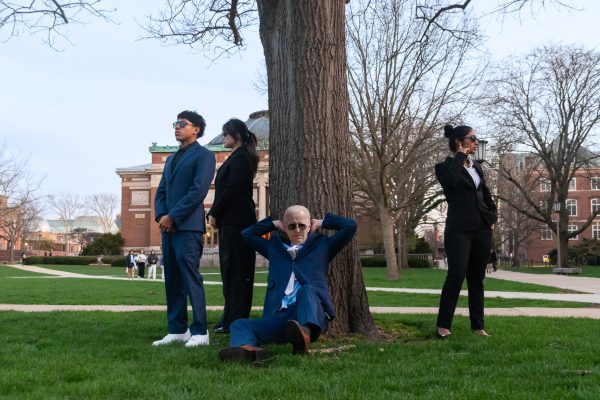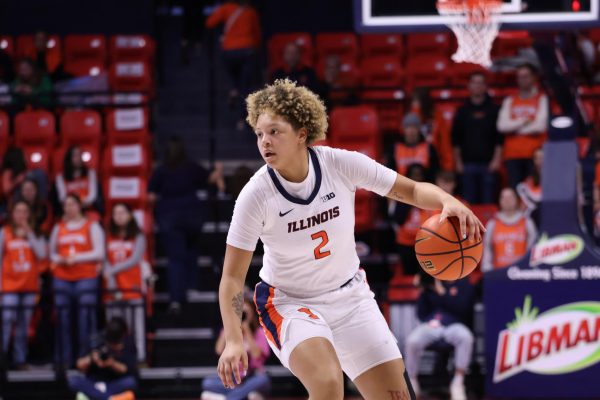More debts piling on students each year
September 30, 2005
Two decades ago, a student could work a full-time, minimum wage job during the summer and be able to pay two-thirds of a public university’s annual costs for four years. In today’s economy, the same job worked for a full year would not cover a year’s expenses at a public university according to a study by the Center of Economic and Policy Research.
Nearly two thirds of students attending a four-year public university or college take out student loans while in school. Students who took out loans averaged $17,600 in debt on graduation day, according to studies from 2004.
Sheena Greenwalt, junior in Business, said covering the cost of school wasn’t discussed with her parents, but she knew she would have to take on a lot of the responsibility due to her parents’ limited income.
“I filled out the FAFSA before entering school and after seeing how much aid I received, I then took out a subsidized loan which is offered through the federal government,” Greenwalt said.
The University distributes approximately $440 million to students each year in the form of loans, grants and scholarships, said Dan Mann, director of financial aid. Compared to the national statistics, the average indebted student from the University owed $15,696 for the 2003-2004 school year.
Get The Daily Illini in your inbox!
Tim Brantner, freshman in ACES, said his father felt it was part of his responsibility to pay for some of the costs of a college education. And, although he will be in debt when he graduates, Brantner said he understands his dad’s point of view.
“It’s probably for the best because it’s going to teach me how to spend money and save in the real world,” he said.
The study found that high levels of debt are due largely in part to rapidly increasing college costs and policy choices that have made more loans, rather than grants, available to students. According to the study, college costs have risen by more than 50 percent since 1990, a number that was adjusted for inflation.
However, Randy Kangas, assistant vice president for the University’s planning and budgeting, disputed the fact that student debt is blamed on rising college costs.
“The cost has not changed dramatically, who’s paying this cost has,” he said. “What has changed is the state’s contribution.”
Kangas said Illinois ranks fourth among Big Ten schools in terms of tuition and mandatory fees for a general, undergraduate student, falling behind Penn State, the University of Michigan and the University of Minnesota. Last year was the first year in the history of the University that student tuition overtook state funding.
The University has had to reallocate millions of dollars from lower priorities to higher, cut administrative costs and raise tuition, among other actions, to keep up with the costs of higher education, Kangas said.
“There hasn’t been the state support that there used to be,” he added. “As state revenue declines, student tuition is picking up the bill.”
And with tuition costs increasing each year, students have to pitch in to stay in school.
Besides taking out a loan, Greenwalt said she also works two jobs during the school year for extra money.
“It’s extremely stressful,” she said. “It’s definitely really hard watching a lot of my peers just kind of fly by the seat of their pants and not have to really worry about anything when I’m constantly worrying about work, paying for school, on top of school work and everything else.”
Brantner said he knows having to pay off loans will be a setback after graduation.
“Hopefully I can find a high-paying job when I graduate, so I can put some money away to pay back the loans,” he said.
Despite the burden of loans, the study holds that a college education is extremely valuable. Recent college graduates currently receive about 80 percent more in pay than recent high school graduates, the study found. This is up from about 40 percent in the late 1970’s.
A college graduate can expect to earn at least around one million dollars more than a high school graduate over a lifetime, Kangas said.
“There is no more of a clearer correlation than a college education and earnings potential,” he said. “By and large, on a personal level, educational attainments will be the single, biggest determinant in income. While everyone would like a free education, the main thing is to get an education.”
While Mann said there are several positive aspects to taking out a student loan, he warned students about the responsibilities that come with owing money.
“A loan is something that has to be repaid,” he said. “The decisions in college can affect you for many years down the road.”






